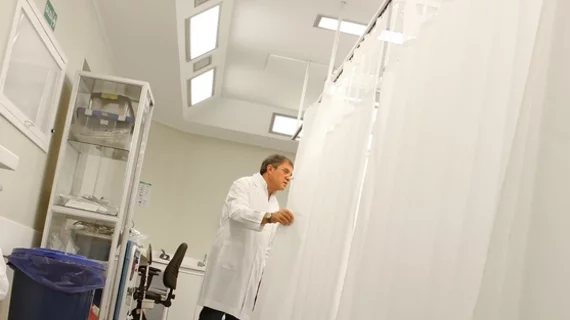AI system designed to treat sepsis patients earlier
Massachusetts researchers have developed a predictive model designed to help physicians know when to administer critical drugs to sepsis patients before the condition turns deadly.
Several medical institutions are turning their innovations on treating sepsis, which can be a potentially life-threatening complication of an infection and is sometimes difficult to treat. It is one of the most frequent causes of hospital admission and common causes of death, according to researchers who penned a paper on the new predictive model.
“The problem with sepsis is the presentation of the patient often belies the seriousness of the underlying disease process,” paper co-author and the W. M. Keck Career Development Professor in the MIT Institute of Medical Engineering and Science, Thomas Heldt, said in a statement. “If someone comes in with weakness and doesn’t feel right, a little bit of fluids may often do the trick. But, in some cases, they have underlying sepsis and can deteriorate very quickly. We want to be able to tell which patients have become better and which are on a critical path if left untreated.”
The model was created using a dataset featuring the medical records of nearly 186,000 sepsis patients who were treated in the Massachusetts General Hospital (MGH) emergency room between 2014 and 2016. When tested, it was able to predict when a patient needed vasopressor medications more than 80 percent of the time, according to a press release from the Massachusetts Institute of Technology (MIT).
The findings were recently presented at the American Medical Informatics Association Annual Symposium.
“There are many cases of sepsis that [clinicians] clearly understand, or don’t need any support with. The patients might be so sick at initial presentation that the physicians know exactly what to do,” Heldt said. “But there’s also a ‘gray zone,’ where these kinds of tools become very important.”
Knowing the right time to administer vasopressor medications for sepsis patients can be the difference between life or death. Early vasopressor intervention is linked to improved mortality in septic shock, while giving the medications too early to a patient may cause problems like heart arrhythmias and cell damage.
The hope for the model is that it can eventually be used in a clinical setting with a bed monitor, tracking patients and sending alerts to ER clinicians when needed. Researchers also hope to create more tools that better predict and identify patients at risk of sepsis and septic shock.
Duke University is also working on improving sepsis care, with an AI tool that can help with early detection. Other researchers are considering how AI can improve sepsis treatment options and improve survival chances.

